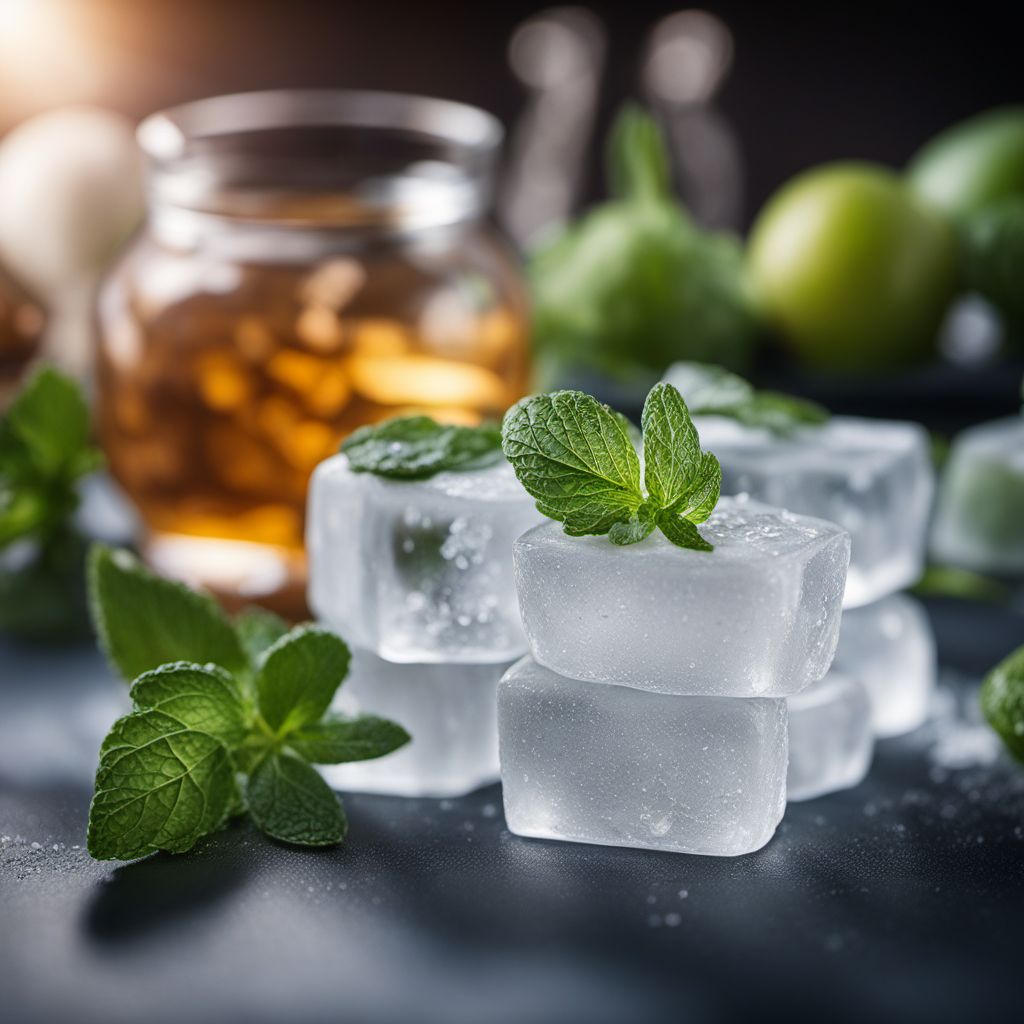
Ingredient
Ice wine
"Liquid Gold: The Delicate Elixir of Ice Wine"
Ice wine, also known as Eiswein in German, is a unique and exquisite wine that is produced from grapes that have been naturally frozen on the vine. This labor-intensive process involves harvesting the grapes in the extreme cold of winter, usually when temperatures drop below -8°C (17.6°F). The frozen grapes are then pressed, and the resulting juice is fermented into a rich and syrupy wine. Ice wine is characterized by its intense sweetness, which is balanced by a vibrant acidity. The freezing process concentrates the sugars and flavors in the grapes, resulting in a wine that is incredibly flavorful and aromatic. It often exhibits notes of honey, apricot, peach, tropical fruits, and floral undertones. The texture of ice wine is viscous and velvety, coating the palate with a luxurious mouthfeel. In terms of appearance, ice wine ranges in color from pale gold to deep amber, depending on the grape variety used. It has a brilliant clarity and often leaves behind "legs" or "tears" on the glass, indicating its high sugar content. Due to its labor-intensive production and limited yield, ice wine is considered a luxury product and is highly sought after by wine enthusiasts. It is typically served in small quantities as a dessert wine, paired with rich and creamy desserts, blue cheeses, or enjoyed on its own as a decadent treat.
Origins and history
The origins of ice wine can be traced back to Germany in the late 18th century. It is believed that the first ice wine was accidentally produced when a winemaker left the grapes on the vine for an extended period, allowing them to freeze. This discovery led to the intentional production of ice wine, and it quickly gained popularity in Germany and Austria. In the 20th century, ice wine production spread to other cold-climate regions, including Canada and the United States. Today, Canada is one of the largest producers of ice wine, particularly in the Niagara Peninsula region. Germany, Austria, and the United States (specifically New York and Michigan) are also renowned for their ice wine production.
Nutritional information
Ice wine is a dessert wine with a high sugar content, typically containing around 100-200 calories per 3.5 oz (100 ml) serving. It is not a significant source of vitamins or minerals.
Allergens
Ice wine is made from grapes and does not contain any known allergens. However, individuals with grape allergies should exercise caution.
How to select
When selecting ice wine, look for bottles that are properly sealed and labeled with the region of origin. Check for any signs of leakage or damage to the bottle. Additionally, consider the vintage year, as ice wines can vary in quality from year to year. Opt for reputable producers known for their expertise in ice wine production.
Storage recommendations
Ice wine should be stored in a cool, dark place, away from direct sunlight and extreme temperature fluctuations. Once opened, it should be consumed within a few days to maintain its freshness and flavor.
How to produce
Producing ice wine requires specific climatic conditions and expertise in winemaking. It is best left to professional wineries with the necessary equipment and knowledge. However, for those interested in amateur winemaking, it is possible to produce a similar style of wine using frozen grapes, although it may not have the same complexity and quality as true ice wine.
Preparation tips
Ice wine is typically served chilled, but not overly cold, to allow its flavors to fully develop. It pairs exceptionally well with rich and creamy desserts, such as crème brûlée, cheesecake, or fruit tarts. For a unique twist, try drizzling ice wine over vanilla ice cream for a decadent dessert experience. It can also be enjoyed on its own as a luxurious after-dinner drink.
Culinary uses
Ice wine is primarily used as a dessert wine, served alongside or incorporated into sweet dishes. It can be used to enhance the flavors of fruit-based desserts, such as poached pears or fruit compotes. Additionally, it can be used as a glaze for roasted meats or added to sauces for a touch of sweetness and complexity.
Availability
Ice wine is commonly available in regions with suitable climatic conditions for grape freezing, such as Germany, Austria, Canada (particularly the Niagara Peninsula), and certain parts of the United States (New York and Michigan).
More ingredients from this category
Recipes using Ice wine

Refreshing Cucumber Naengguk
Chilled Delight: Cucumber Naengguk - A Refreshing Korean Summer Soup

Lot Chong Nam Kathi
Coconut Pandan Jelly with Sweet Coconut Sauce

Crimean Tatar Mint Lemonade
Refreshing Crimean Tatar Mint Lemonade: A Zesty Twist on a Classic

Chè đậu xanh with Coconut Cream and Pandan Jelly
Creamy Coconut Pandan Chè đậu xanh: A Vietnamese Delight

Mojito Isleño with a Tropical Twist
Tropical Breeze Mojito - A Refreshing Puerto Rican Delight

Refreshing Thai Rice Soaked in Jasmine Water
Jasmine Delight: A Cool and Fragrant Thai Rice Dish

Helado de Paila - Ecuadorian Traditional Ice Cream
Andean Delight: A Taste of Ecuadorian Helado de Paila

Manchu Snow Delight
Sweet Snowflakes: A Manchu Delicacy

Creamy Papaya Delight
Tropical Bliss: Creamy Papaya Delight

Saint Lucian Spiced Fruit Punch
Tropical Delight: Saint Lucian Spiced Fruit Punch

Pashtun-Style Piragua
Refreshing Pashtun Ice Treat: Piragua with a Twist